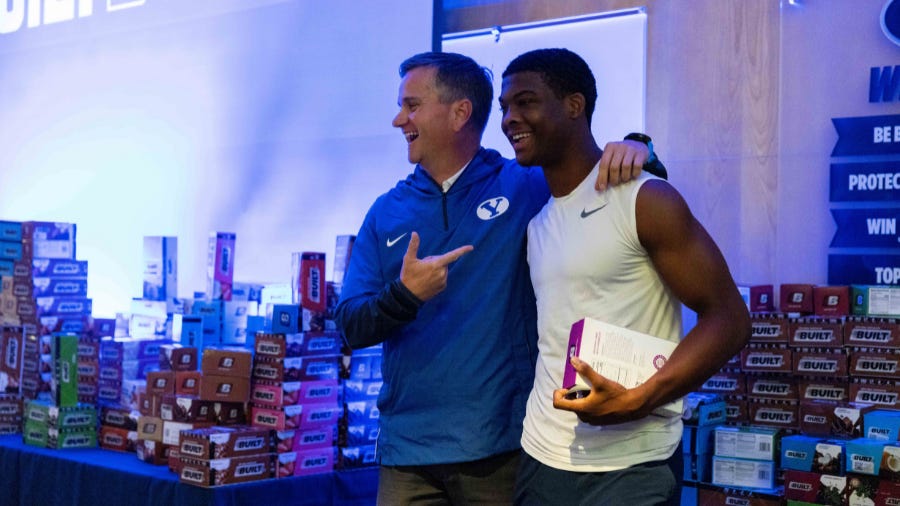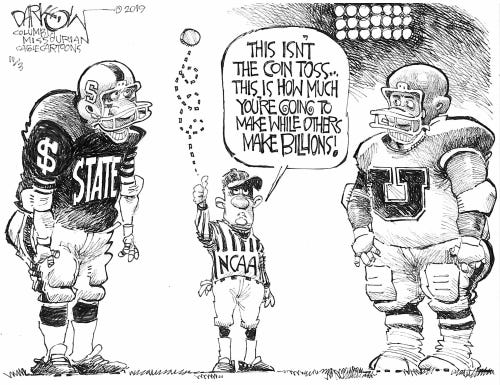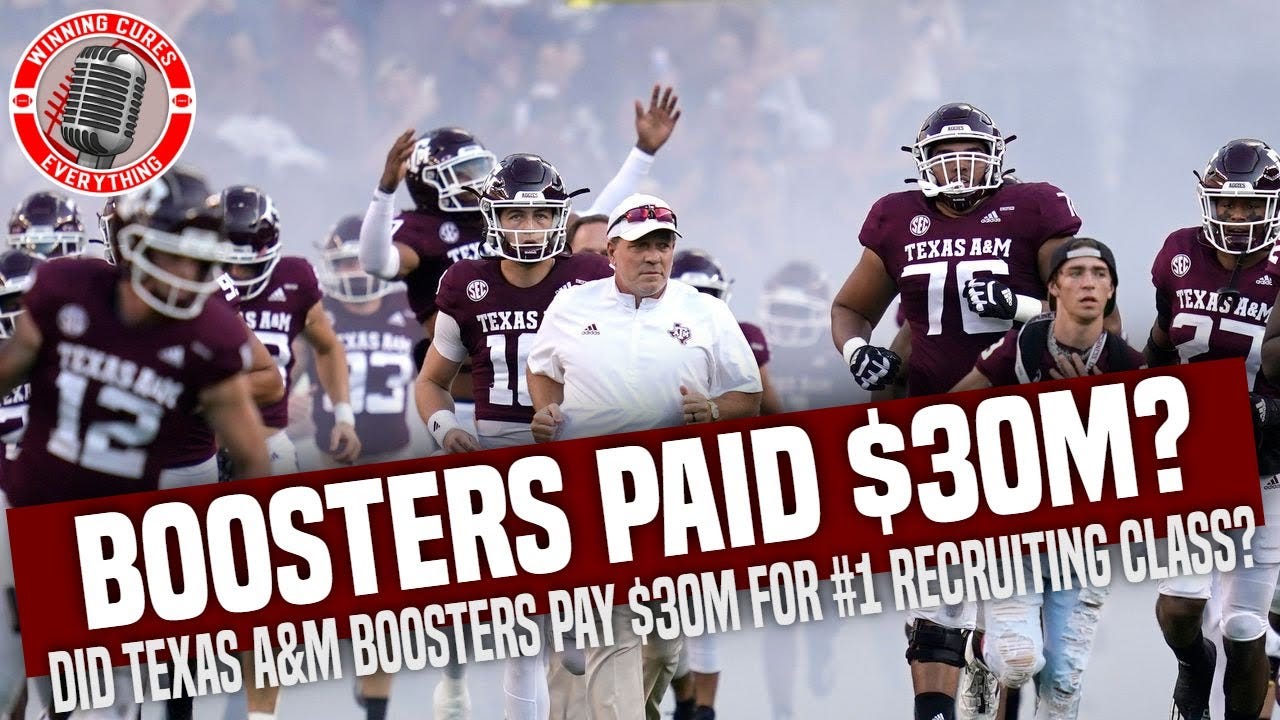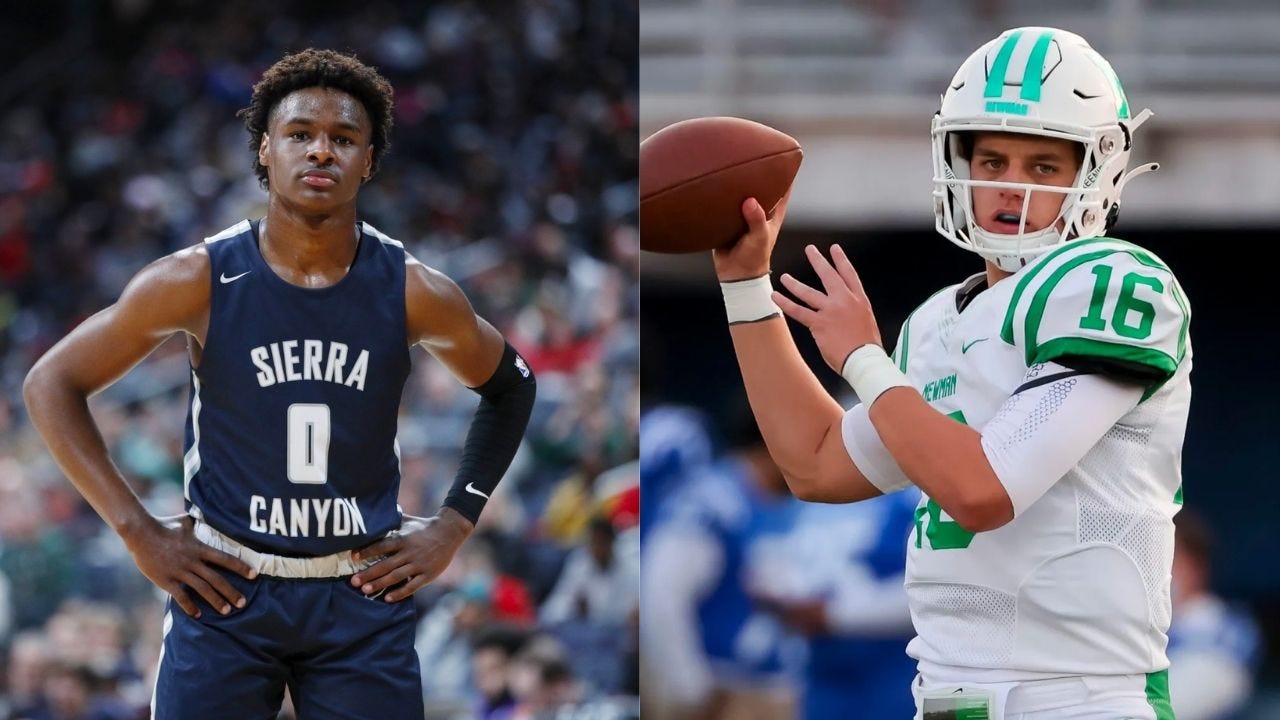If you haven’t heard the opening statement of Jimbo Fisher on national signing day in front of Texas A&M’s media team, it’s a 3 minute rant that defies the unwritten rules of the coaching profession.
Jimbo came out prepared to lay down a gauntlet for anyone who would challenge his #1 rated signing class. Which, by the way, is the highest rated in the history of college football.
Texas A&M signed seven 5-star rated players this cycle, after only signing five total in his first five years as the Aggies head coach.
His defensive rant on national signing day broke the first rule of controversy – if there’s nothing to see, don’t even talk about it.
This controversy starts and ends with Name, Image, and Likeness (NIL), which has shifted the landscape of college sports forever.
As a daily reader, you know I’m a huge fan of NIL and players receiving proper compensation.
There’s a lot of good coming out of NIL, but there’s also some not so good things taking place.
Let’s break it down 👇
The Good Of NIL
A common debate against additional payments for student-athletes is that an “athletic scholarship” is enough.
But as I’ve debunked before, only 1% of all collegiate student-athletes receive a full ride, and there’s additional expenses that many of them still need to pay.
NIL helps players avoid money traps that in the past have lead to NCAA violations.
But it goes beyond that.
A few months ago a BYU booster signed all of the walk-on football players to a NIL deal that will help them pay for school. That wasn’t allowed until recently.

When boosters and businesses use their power for good, the benefit for the players can only be positive.
The second and third order effects of NIL deals can also give support staffs the opportunity to teach young players how to manage money even if they don’t go on to play in the pros.
Further, take what many of the Ohio State football players are doing this summer.
They’re getting paid by Nike to run youth camps and help train the next generation of athletes.
We’ve also seen collegiate athletes donate part of their NIL earnings to charity.
The good outweighs the bad so keep that in mind as you scroll.
The Bad of NIL
My initial thought was that the NCAA was irresponsible, meaning they just threw their hands up and decided not to do anything to either help or limit NIL deals with athletes.
But after looking in to it further, there’s not much the NCAA can do to put effective curbs on potential NIL deals.
Federal anti-trust laws make it difficult, if not impossible, for the NCAA to effectively manage or limit who can be the beneficiary of an NIL deal and how much they could potentially make.
Anti-trust laws prohibit policies that limit competition, and the NCAA was rightly fearful in running afoul of federal law.

Further, individual state laws are equally inconsistent. Utah, where BYU is located, doesn’t have laws that prohibit schools from brokering deals between athletes and suitors.
In the above-mentioned case of the booster paying for walk-on scholarships, state law allowed it, but that’s not the case in every state.
What’s really bad about this situation, aside from virtually no enforceable limits from the NCAA, is that the potential exists for federal government legislation that would only come if the NIL erupts in front of us.
Federal intervention will potentially remove college athletics from the amateur status into more of a professional setting. This then opens the door for the unionization of athletes and W-2’s.
In this case, how do you differentiate between a college football player and a regular college student?
If state legislatures get involved to loosen current state-level restrictions, how does the playing field stay remotely leveled?
Could this be the end of the NCAA’s reign?
The Ugly of NIL
NCAA bylaws prohibit using endorsement deals as a recruiting tool. As we dive into the ugly part of NIL, this is where I believe the worst of NIL lies.
I haven’t been able to find anything that lists the NIL deals for the incoming Texas A&M freshman class, but there are multiple rumors that appear to show that Aggie boosters brokered deals with this class to secure their commitment.

If proven true (which is likely the case) – that’s a major violation.
Why is this the ugly part?
Greed. Corruption. Manipulation.
But it’s on the adults, not the athletes.
The parents and boosters are steering players to a school because of the short-term monetary gain.
For most athletes there are a lot more commas in the payday at the NFL level. Or by graduating with a debt-free degree and entering the workforce.
NIL’s ugly-side rests solely with adults. The boosters will prey on young kids, which has was an issue before name, image, and likeness even existed.
The Consequences
Now that it’s mostly out in the open, how will big money adults avoid what few rules exist to ensure they get what they want?
How will parents react to their athlete being courted with dollar signs?
While we all may want to judge an athlete on where they decide to attend college, a lot of the responsibility lies with the adults.
In the case of male athletes, it’s been scientifically proven that the male brain doesn’t fully form until the mid-twenties. So, if the partially formed brain of a teenage athlete can’t be trusted, it falls on the adults to make the BIG decisions.
And we are seeing the first of many truly misguided decisions that will affect athletes negatively.
What happens when an endorsement that leads to a commitment is found to be in violation of the rules or the promise isn’t kept? What happens when a NIL deal goes sideways?
The adults in this conversation will be at fault, while the athletes will have to deal with many of the consequences.
Final Thoughts
Whether the Texas A&M recruiting class was “legal” or not, Jimbo Fisher’s speech was not a good look for NIL.
Don’t forget, that NIL really only caters to those that don’t necessarily need it (at least in its early stages).
We have high school athletes such as Bronny James and Archie Manning signing million dollar NIL deals – I can assure you that they would have been just fine without them (look at their last names).

The stories of walk-ons getting full scholarships are few and far between at this stage of NIL.
None of my former basketball teammates at Boston University have signed any deals. They’re D1 basketball players at the mid-major level who made it to the NCAA tournament just 2 years ago.
NIL is currently for 3 types of athletes:
- the most talented men’s football and basketball players
- those with huge social media followings
- football or basketball players at Power 5 schools with NIL collectives funneling money to them under the guise of NIL
I’m all for athletes getting their fair share.
What I’m against is adults taking advantage of talented young athletes for their own personal gain.


